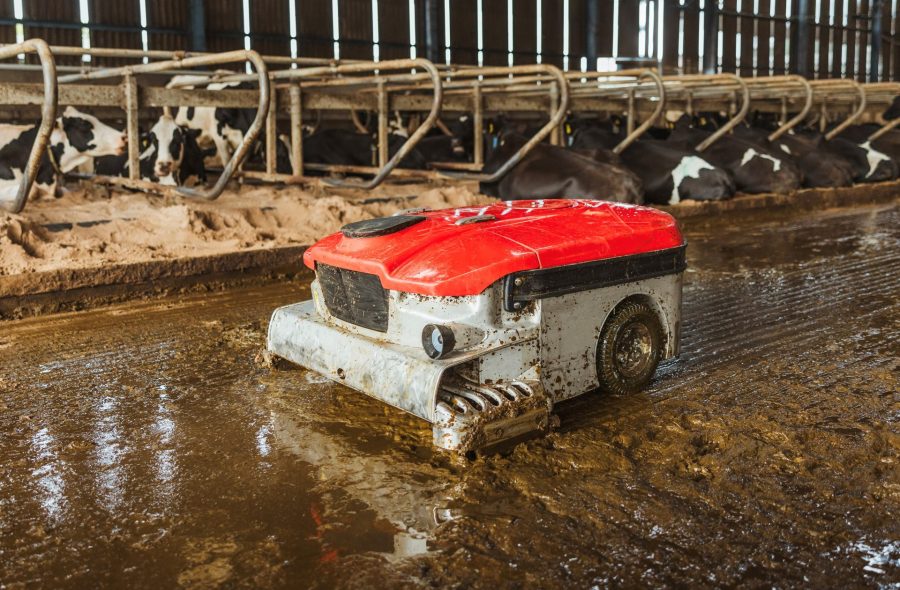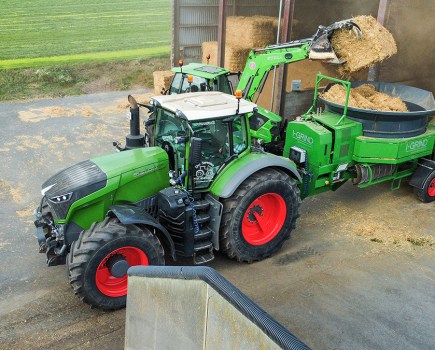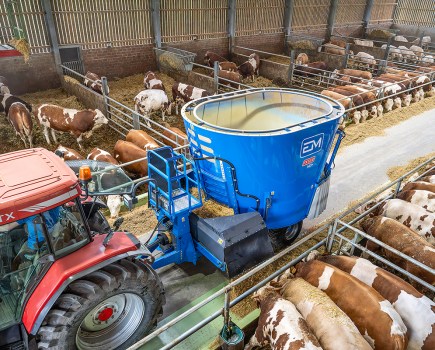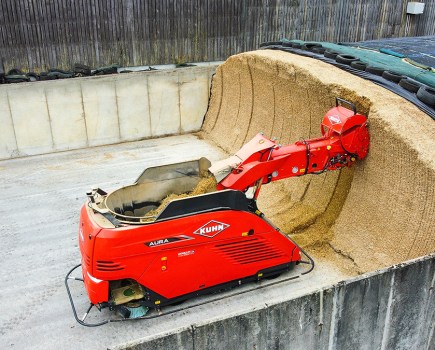Towards the end of last year, Lely presented an array of new products. These included the larger capacity feed pushing Juno Max, the slurry vacuuming Collector C2, which has the option of a flushing system for dealing with sand, and lastly the Zeta AI Barn Monitor, an artificial intelligence-featuring set-up for cubicle building observation.
KEEPING IT BRIEF
- The Juno Max autonomous feed pusher benefits from more sophisticated collision avoidance technology.
- Zeta AI Barn Monitor is an AI-supported monitoring system.
- For farms where sand is used as cubicle bedding, the Collector C1/C2 vacuum robot features optional Sand Flush technology.
Lely was one of the few milking machine manufacturers who attended EuroTier. But its new product focus wasn’t on the Astronaut milking robots; instead it was showcasing three new products with a further focus on incorporating technology and automation. These were the three key innovations:
- Juno Max feed pusher
- Discovery Collector C1/C2 vacuum robot with Sand Flush
- AI system Zeta AI Barn Monitor
The Juno Max feed pusher was developed for larger dairy farms, and the Collector C2 slurry sucking robot with optional sand flushing function for farmers who use sand in their cubicles. The third innovation, the Zeta AI Barn Monitor system, is an AI-supported monitoring system. This is a kind of offshoot of the Zeta AI Calving Monitor technology (which we will look at in another issue) that is able to monitor cows in the calving pen.
We were given a preview of the products at the manufacturer’s factory in Maassluis. Unfortunately, the bluetongue epidemic was at its peak in the Netherlands at the time, which is why we were unable to take our own photos in the barn.
LELY JUNO MAX
Smart and powerful
16 years after the launch of the Juno 150 feed pusher and facelift in 2011 and again in 2018, Lely is launching the Juno Max, a new variant for farms with up to 3,000 cows. The Juno Max is solidly built and equipped with three large drive wheels, enabling it to meander across most yard surfaces.
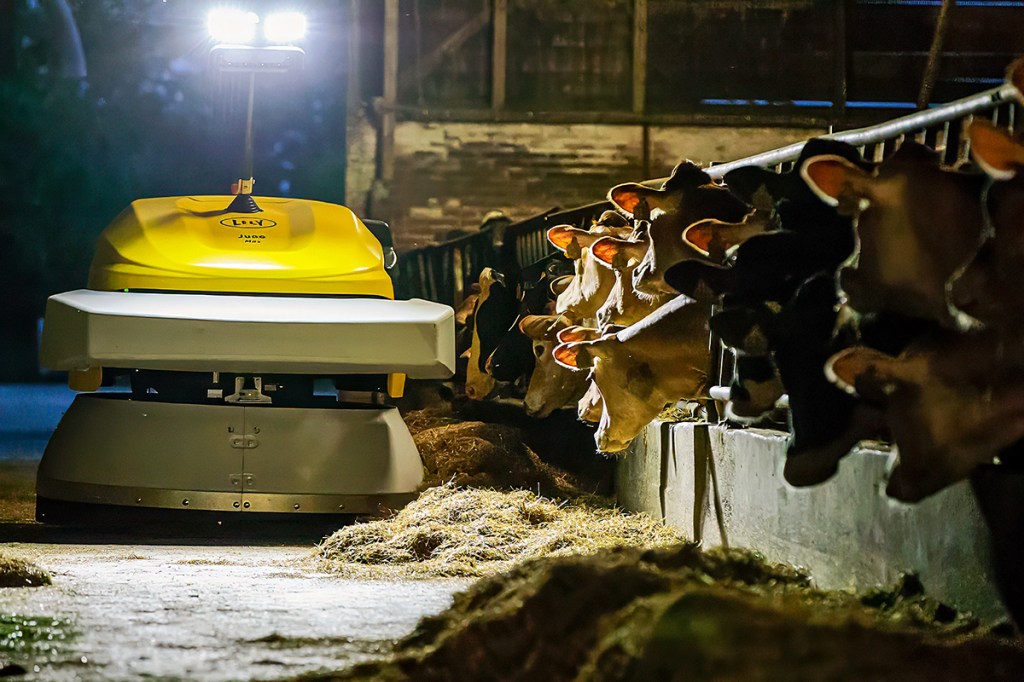
Powered by a 48-volt lithium-ion battery, the battery charges inductively, minimising wear and tear as well as reducing the number of technical faults that can occur with the smaller Juno. If you subtract the charging time, the Juno Max is up and working for up to 16 hours a day.
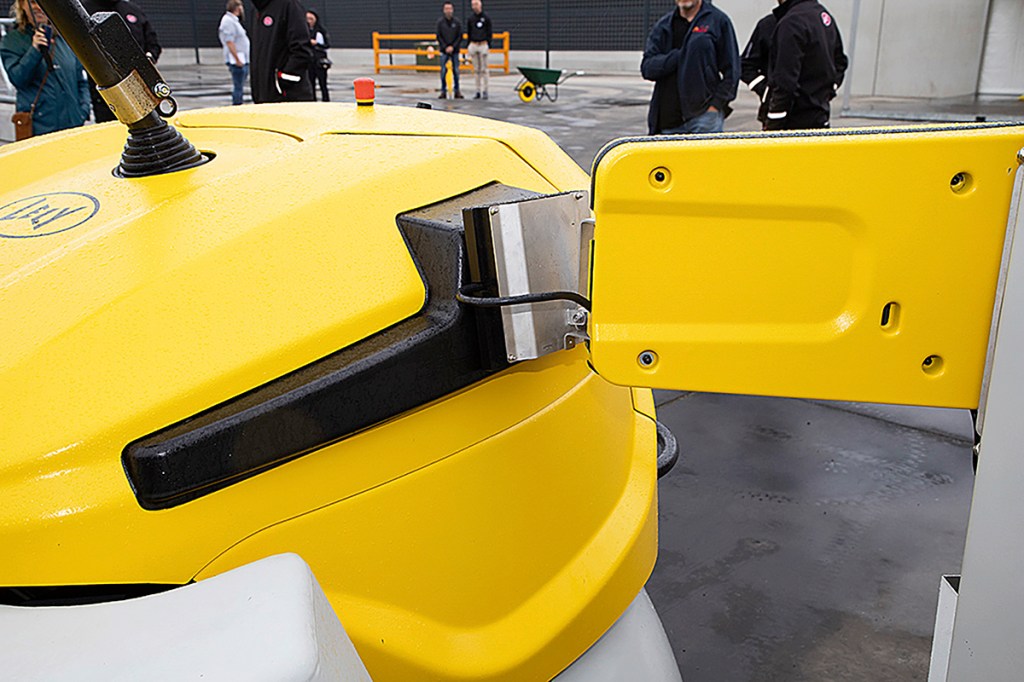
Lely says the size allows the feed pusher to cover up to 3 kilometres on one charge. The Juno Max can cope with small-ish steps and inclines of up to 20%. The forward speed is as much as 4.2km/hr; the average working speed is around 3.5km/hr.
Free navigation
Lely has developed a navigation system that doesn’t rely on a GPS signal. This allows the 600kg Juno Max to drive through the barn and across the yard without the need for rails or transponders in the ground. Instead, it utilises a 3D map of the farm, which is digitally created within 30 minutes. The map is then used to determine routes and areas the machine can take to avoid a potential collision. LIDAR and cameras then help stop the robot running into things, so not only are obstacles detected, but they are also avoided. Operation and changing routes are all done via the maker’s smartphone app.
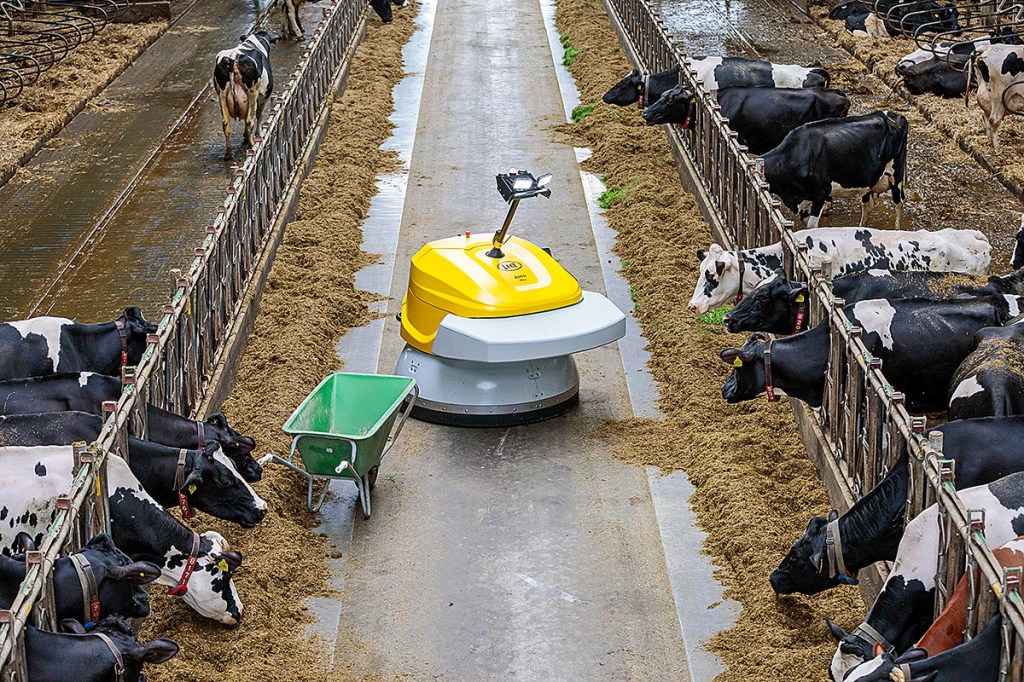
Another noteworthy feature is that the new robot can measure the volume of forage remaining along the feed fence in front of the cows. The data collected on each journey is shown graphically on the app so that you can then decide if the cows need feeding sooner or later than usual, or if the amount of ration being mixed can be scaled back or more is needed. If the farm also happens to have the Vector feeding robot, the Juno Max can let it know that the amount of feed has fallen below a certain level!
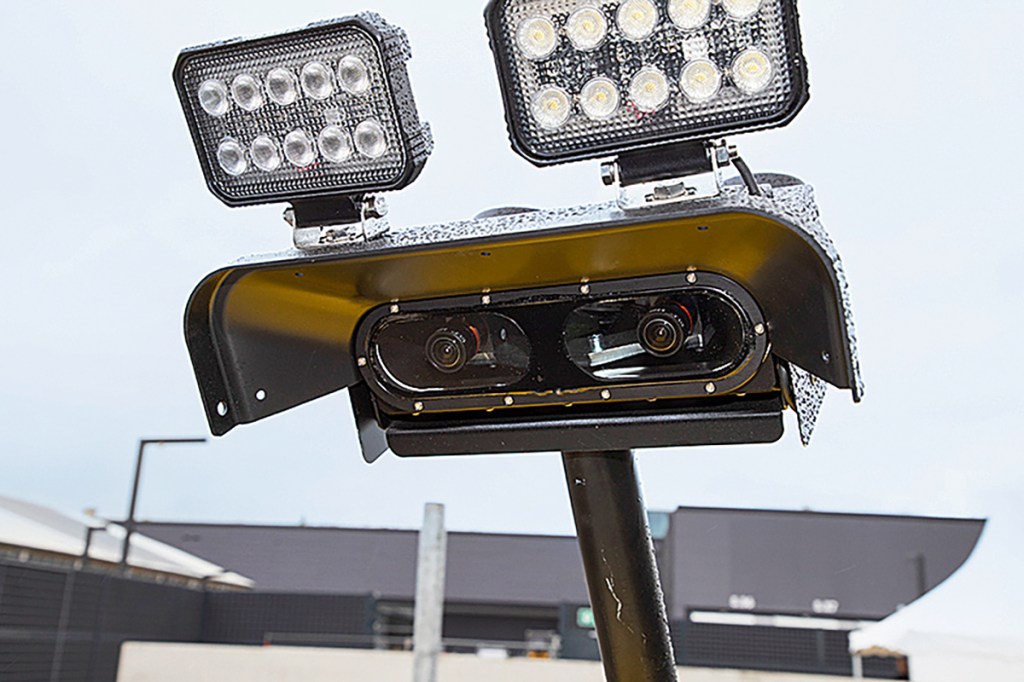
Fewer error messages
When developing the Juno Max, Lely says it was important to minimise the number of alarm prompts by 90%. The Juno Max is connected to the internet 24/7, allowing Lely’s technicians (who are based all over the world) to carry out remote maintenance. The constant online connection also lets the system learn from recurring errors.
Although Lely is keeping quiet about this, it seems likely to us that the Juno Max will also be equipped with AI; indeed, the feed pusher would then be able to learn from past alarms in order to generate fewer calls for help.
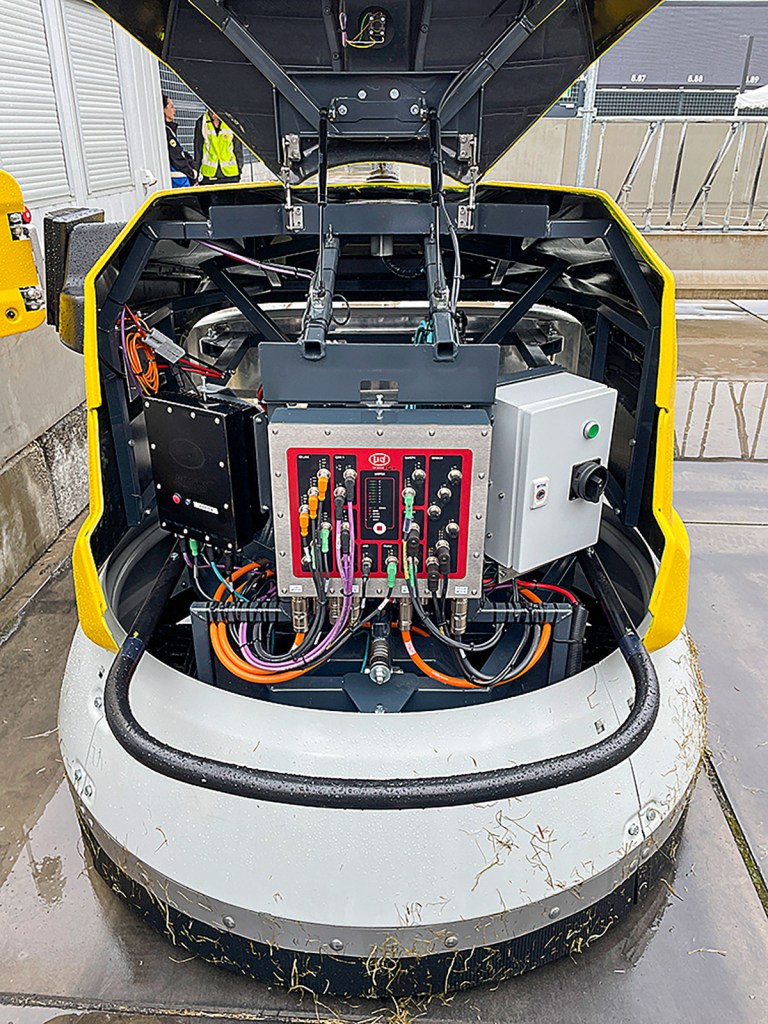
Another two-year wait
12 prototypes are currently running on test farms with 150 to 700 dairy cows. Two more robots are currently being installed on farms with over 1,000 cows. By the time the new Juno Max is launched in 2027, Lely wants to optimise the system so that it meets the requirements of large-scale operations.
LELY ZETA AI BARN MONITOR
A new form of animal control
Another AI-backed piece of technology is Zeta (pronounced Sita). Far more than just a fully automated monitoring system for cows about to calve, the Zeta AI Barn Monitor also recognises animals in heat and sick animals as well as when feed is missing or which area needs scraping.
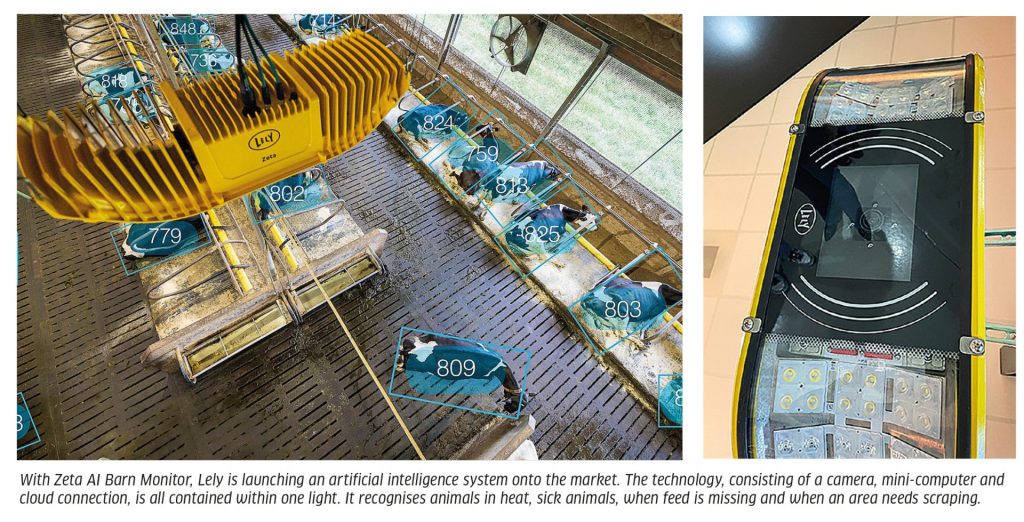
Light with a brain
Simply put, the Zeta AI Barn Monitor is a barn light with a camera and an integrated computer. The luminosity of the system is designed so that, at a mounting height of 6 to 8 metres, one light for every 10 animals is sufficient to achieve up to 250 lux at the barn floor. The light intensity automatically adjusts to the level of daylight, which helps to save energy. And to aid animals resting at night, the light offers a moonlight mode. Though not a primary goal in its development, the Zeta system replaces any other lighting system.
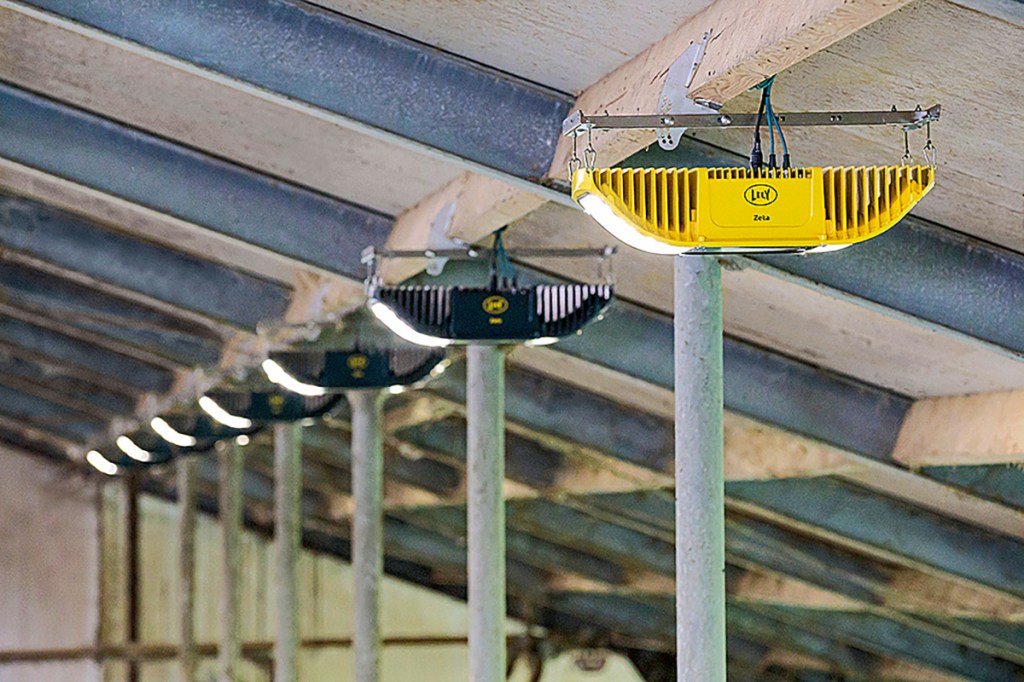
Animal locating system included
In addition to 72 LEDs, each unit contains a camera and a mini-computer that ‘talks’ with the Lely cloud server via a WiFi connection. Zeta utilises the animal recognition data collected by the Astronaut milking robot to help identify the cows. It remains to be seen whether farms with other makes of milking robot/parlour will be able to use the new technology.

Once the camera has captured the cow, the system never lets her out of its sight. As with any tracking system, the technology always knows where each cow is, constantly analysing all of her activities, such as her eating, lying and movement. As well as cows in heat, it can detect the onset of lameness or a metabolic disorder such as ketosis.
Networked barn systems
The cloud solution permits Zeta AI to communicate with other systems from Lely. In the future, Zeta will be able to message the Collector C2 robotic vacuum, indicating which shed passageways need cleaning. The scraper then tootles off to clean up the area. Likewise, by using the Horizon management system, Zeta can communicate with the Vector feeder so that it pushes feed in at the right time or adds more fodder.
We hold on
The Zeta AI Barn Monitor system is no ordinary barn light. Complete with the cloud solution and the link to an AI system, Zeta is, in reality, a control system. It is very possible that the new technology will soon replace other systems for heat detection and animal health monitoring. The fact it can also communicate with other automated machines also strengthens the argument for the new technology. However, it is currently still in the testing phase. Even though it appears to be on the home stretch, Lely has not specified as to when Zeta will be commercially available.
LELY DISCOVERY COLLECTOR C1 AND C2 WITH SAND FLUSH
Now with sand flushing
As we know, there are a good number of farms using sand-bedded cubicles. To give these farms a slurry-collecting robot option, Lely has developed a new option for its Discovery Collector C1 and C2 that flushes out the manure tank so sediment doesn’t build up. On the C2, this flushing process is carried out while the unit is charging.
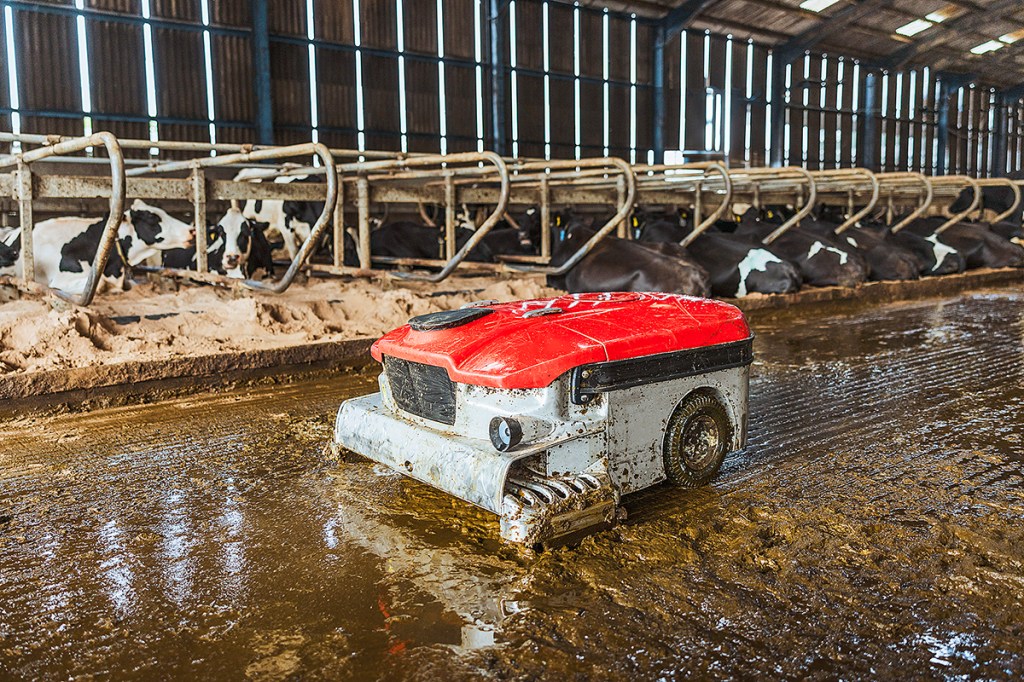
Water on-board
To deal with the settled sand in the manure tank, the robot with the aptly named ‘Sand Flush’ function is supplied with water from a small cistern at the charging and slurry disposal station. Up to 36 litres of low-pressure water is flushed through the tank, which, according to Lely, is enough to clean out any sediment.
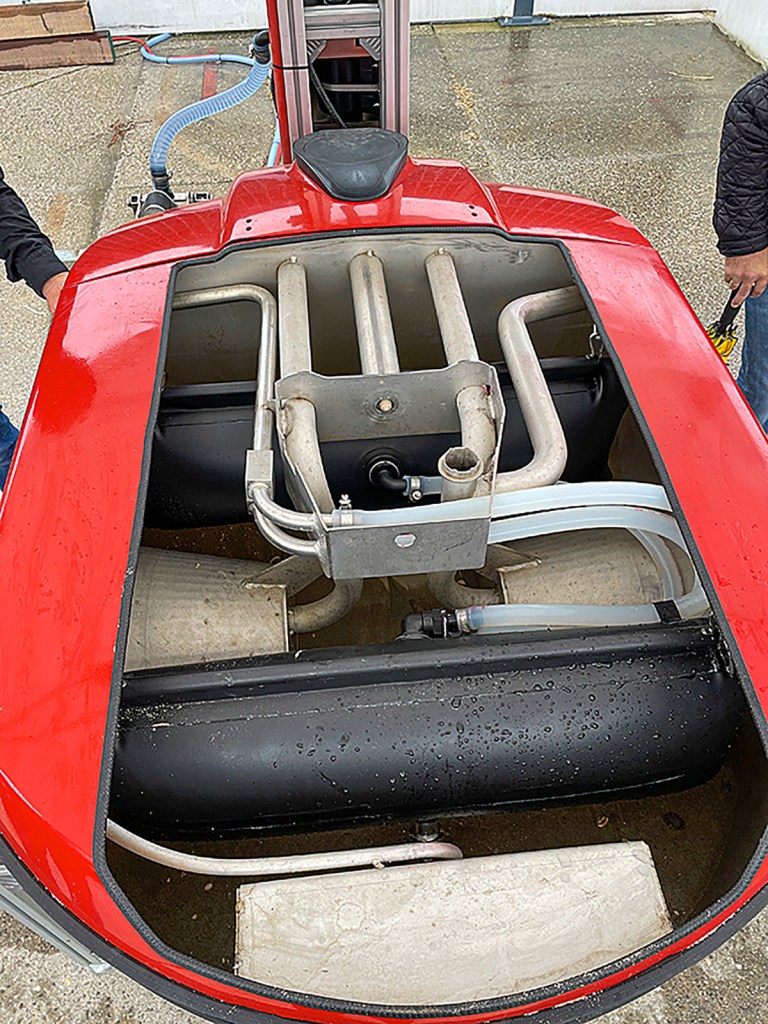
As far as the purchase costs of the Sand Flush option are concerned, a price of around €4,000 was quoted at the presentation.
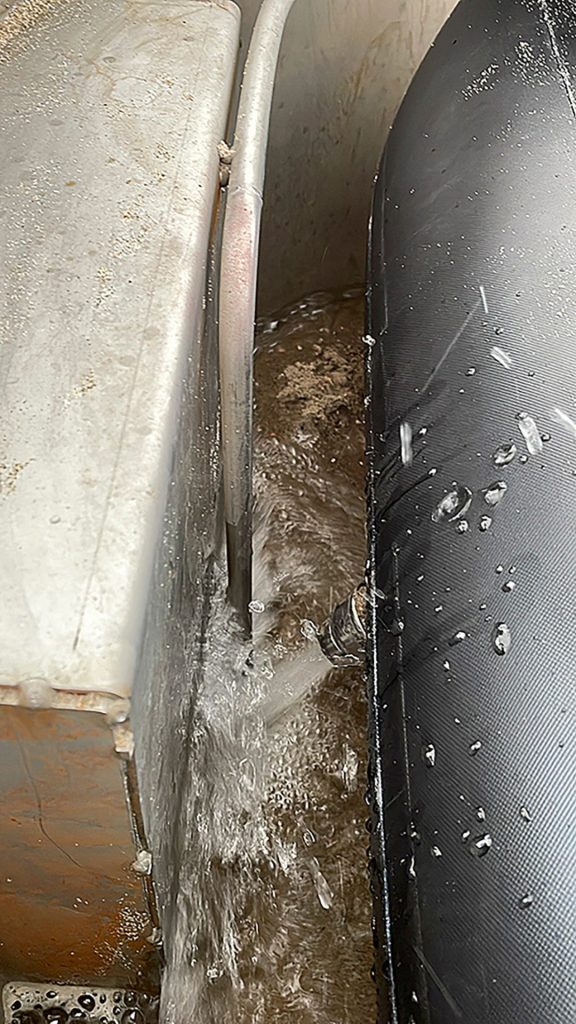
Handles 120-head groups
Incidentally, the Collector C2 was introduced in 2023. The long-serving C1 has enough capacity to look after 60 cows, whereas the C2 is able to cater for twice that number. And while the C1 requires two stations — one for emptying into the slurry store and another for charging the battery — the C2 requires only one docking station where it can do both. This two-jobs-in-one process is made possible by the inductive charging tech of the C2’s battery, which, according to the manufacturer, is designed for 14 hours of operation per day.
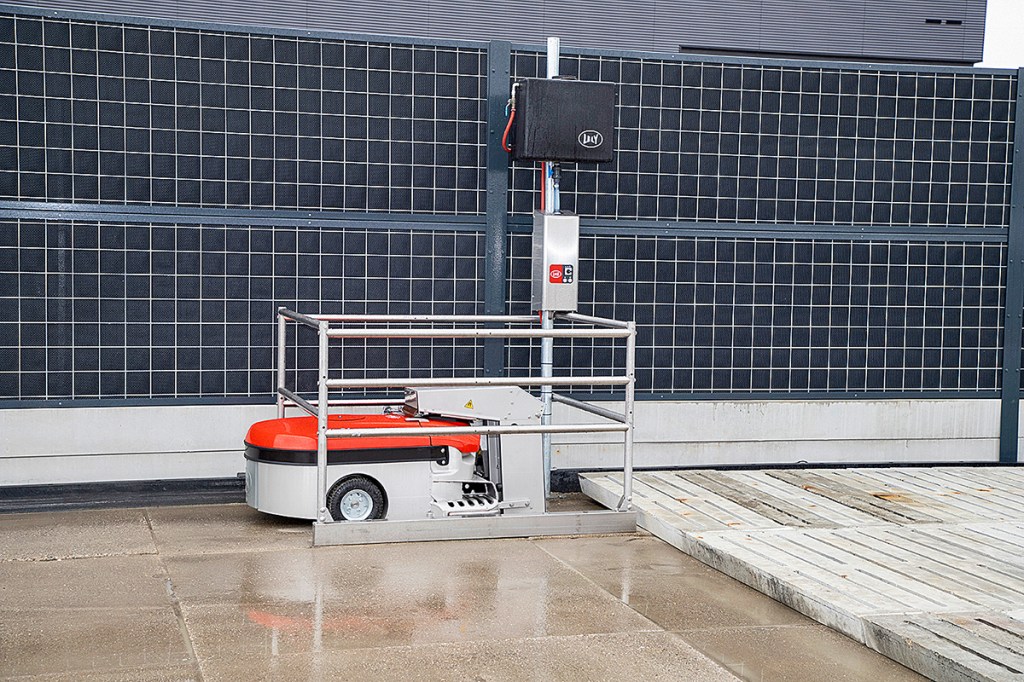
Martin Zäh
For more up-to-date farming news click here and subscribe now to profi and save.

